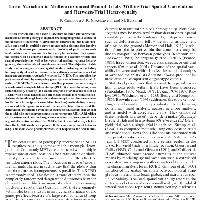Resumen
- Multienvironment Trials (MET) are used to make cultivar recommendations about genotypes in plant breeding programs. Because of the presence of genotype X environment interaction, METs are usually conducted in multiple environments using designs that involve several replications per environment. Blocking of plots within each trial enables one to account for between plot variation. To improve the comparison of genotype means, taking into account within-trial spatial correlation as well as between-trial residual variance heterogeneity, alternative mixed models can be used. The objective of this study was to compare several spatial models, including or excluding heterogeneity of residual variances for cultivar evaluation in a set of independent peanut (Arachis hypogaea L.) METs. The modeling impact was evaluated by comparing genotype means from each trial. A series of 18 METs from a peanut breeding program, as according to a randomized complete block design (RCBD) at each location, were simultaneously fitted by (i) a classic analysis of variance model for an RCBD with blocks random and (ii) mixed models incorporating spatial correlation through isotropic and anisotropic covariance structures for the error terms (power correlation function) and including homogenous and heterogeneous residual variances to take into account the different environments having different precision. Results suggest that the model with stationary anisotropic error structure AR1XAR1 within each environment and heterogeneous residual variances constitutes a good alternative analysis for METs, but it was not always better than the RCBD models for peanut. Differences were found between long- and short-cycle peanut cultivars with respect to the best model.
